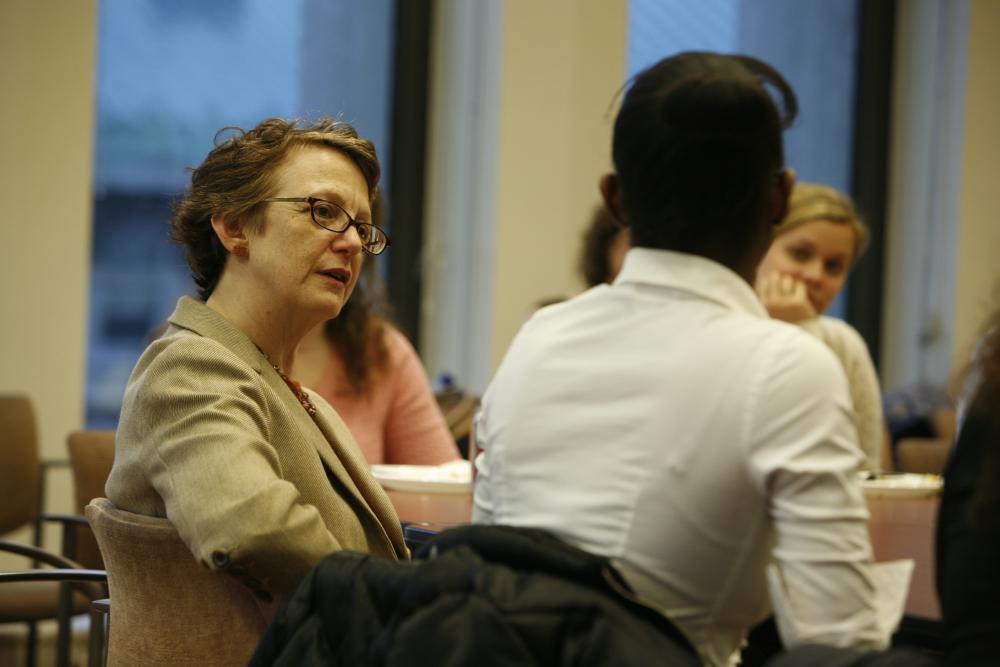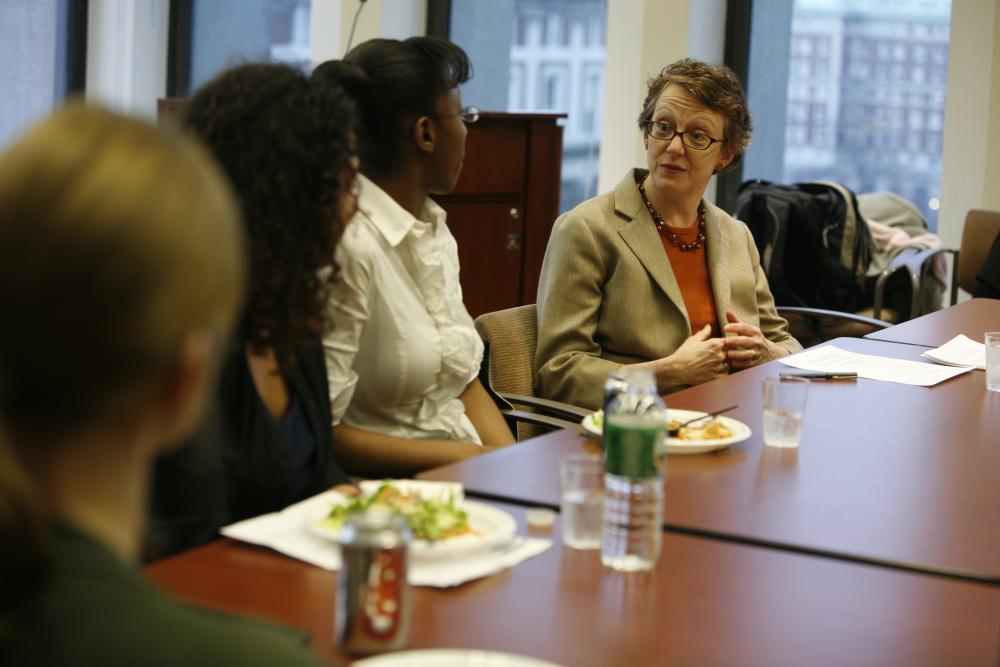Child Advocacy Clinic to Represent Adolescents in Foster Care
Each year, thousands of adolescents are shuttled through the state’s foster care system with little voice in their fate. Columbia Law School’s Child Advocacy Clinic (CAC) will do its part to remedy this situation under its new focus, announced Professor Jane Spinak at Adolescents and the Law, a dinner and discussion on March 22 sponsored by the Youth Justice Association. Starting in the fall, the clinic will represent youths aged 16 to 21 who are aging out of the foster care system and -- unlike many child advocates -- clinic members will ensure that each client maintains an active role in his or her case. The major benefit of youth participation is that it can make court professionals far more accountable to the promises they make to adolescents, said Spinak, the Edward Ross Aranow Clinical Professor of Law and director of the clinic.
By New York state law, each adolescent remaining in foster care until adulthood requires an appropriate “permanency” plan that determines what happens to him or her upon release from the child welfare system. Spinak ‘s clinic students will work closely with young clients to address basic needs they will have to meet once they are on their own, such as housing, health care, education, employment, job training, and, where applicable, mental health care.
A novel aspect of the clinic will be an interdisciplinary weekly seminar addressing adolescence from a variety of perspectives. In addition to legal professionals, students will hear presentations by sociologists, neurologists, and psychologists, said Prof. Spinak, citing research showing that the adolescent brain differs significantly from the adult brain. The inter-disciplinary perspective will help Columbia Law students understand the special challenges associated with representing children at different stages of development. Graduate students from other disciplines also will be invited to enroll in this seminar, she added.
To bring to life the issues adolescents in the justice system face, Spinak invited a 17-year-old foster child to speak on her experience with her own court case, which involved her transitioning from foster care to adulthood. The young woman, who has had little contact with her lawyer in her encounters with the court system, provided a window on the kind of clients the clinic students would be representing in the fall. She also recounted research she did for the Youth Justice Board (YJB), part of a non-profit think tank called the Center for Court Innovation (http://www.courtinnovation.org) that gives young people the opportunity to have a voice in making policy. Her research included interviewing parent advocates, case workers, and staff from the Administration for Children’s Services, as well as judges, who acknowledged the lack of youth participation in cases before their courts.
The event was organized by Columbia Law School’s Youth Justice Association, a 10-year-old group that invites leading practitioners to the Law School to discuss their work and experience in youth advocacy and supports student pro bono activities on behalf of young people.
Previously, the CAC, which Spinak co-founded 25 years ago, represented children of all ages. Most recently, while Spinak was on sabbatical, the clinic represented immigrant children seeking permanent residence in the United States under the direction of Ragini Shah, a lecturer-in-law.
PHOTOS BY DIANE BONDAREFF

